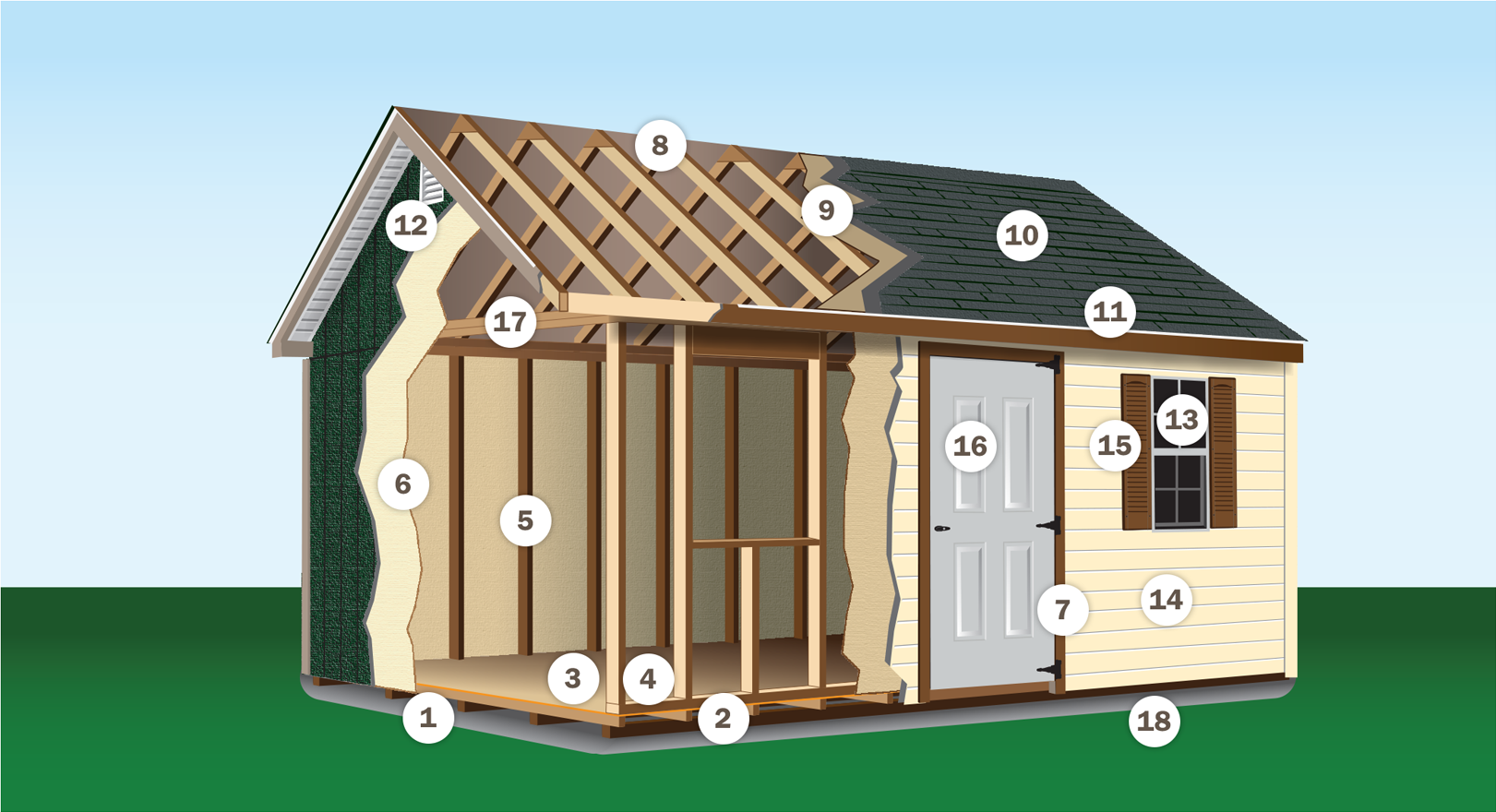
Hey there, fellow DIY enthusiasts! So, you've finally decided to take the plunge and build your own storage shed. Awesome! It's a fantastic way to add extra space to your property, organize all those pesky things you've been meaning to put away, and maybe even get a little bit of satisfaction from building something with your own two hands.
But hold on a minute! Before you start grabbing tools and hammering nails, let's talk about the most crucial part of this whole endeavor: choosing the right shed plans. Just like a good foundation is key for a strong house, a well-designed plan will guide you towards a sturdy, functional, and beautiful shed.
What to Look for in Quality Shed Plans:
So, what makes a good shed plan? Well, it's not just a bunch of scribbles on a piece of paper. It should be a detailed roadmap to your new storage haven, covering everything from foundation to roof.
1. Clarity and Accuracy:
Imagine trying to bake a cake with a recipe that leaves out crucial ingredients or has vague instructions. That's how confusing and frustrating working with poorly drafted plans can be. Look for plans that are clear, easy to understand, and have precise measurements. Trust me, you'll thank yourself later when you're not scratching your head over what a "2x4" really means or how to connect that pesky corner piece.
2. Detailed Construction Drawings:
Your plans should have clear, detailed drawings that show every aspect of the shed's construction. Think of it as a visual instruction manual. Look for detailed views of the framing, walls, roof, and even the doors and windows. Don't settle for simple sketches; you want plans that are as close to blueprints as possible.
3. Materials List and Cut List:
A good shed plan should include a comprehensive materials list and cut list. This ensures you're buying the right amount of lumber, hardware, and other materials. Plus, a cut list helps you organize your wood and makes sure you have the right pieces for every step of the construction process. It's like having a shopping list for your shed project, making sure you don't miss a single thing.
4. Foundation Design:
The foundation is the backbone of your shed, so don't underestimate its importance. Look for plans that clearly detail the foundation design. Will it be a concrete slab, a pier foundation, or something else? Make sure you understand the design, the materials needed, and the process for building it.
5. Roof Design:
There are many roof styles out there, from simple gable roofs to more complex hip roofs. Choose a roof design that fits your aesthetic preferences and the climate where you live. Your plan should clearly show the construction details, the roof framing, and the necessary materials for each style.
6. Doors and Windows:
The doors and windows add character to your shed and allow for ventilation and natural light. Your plans should specify the size, placement, and type of doors and windows. Think about how you'll access your shed and what kind of light you need inside.
7. Optional Features:
Do you want a loft for extra storage? Maybe a workbench? Quality plans should offer optional features and instructions on how to incorporate them into your shed design. You don't have to build everything at once; these optional features can be added later if you need them.
8. Professional Help is a Good Thing:
If you're not confident in your DIY skills or the plans look overly complex, don't be afraid to seek professional help. A local contractor or an experienced builder can guide you through the process, answer your questions, and offer valuable insights based on their experience.
Beyond the Plans: Tips for Choosing the Right Shed for You
Now that you're equipped with knowledge about the essential components of quality shed plans, let's talk about some other crucial factors to consider:
1. Size:
The first thing you need to think about is the size of your shed. How much stuff do you need to store? Consider your belongings, their dimensions, and how much space you'll need for future items. Don't underestimate the power of having enough space to move around comfortably within the shed.
2. Material:
Sheds can be built from various materials, like wood, metal, vinyl, or even concrete. Choose the material that best suits your needs and budget. Consider the durability, maintenance requirements, and aesthetic appeal of each option.
3. Style:
From classic barns to modern minimalist designs, there's a shed style for every taste. Take some time to browse different styles and find one that complements your home and landscape. Don't be afraid to add your personal touch, whether it's with colorful paint, decorative trim, or unique window designs.
4. Location:
Think carefully about the location of your shed. Where will it be placed on your property? How will it connect to your home or existing structures? Consider factors like drainage, sunlight, and proximity to utilities.
5. Permit Requirements:
Before you even start building, check with your local building department about any permits required for your shed. Some municipalities have specific regulations about shed size, setbacks, and materials.
Building Your Dream Shed:
With the right plans and careful consideration of these factors, you'll be well on your way to building a shed that's functional, beautiful, and a source of pride for years to come. So, get those tools ready, grab a cup of coffee, and start creating your own storage haven. Remember, building a shed is a journey, and the satisfaction of seeing it come together is well worth the effort. Good luck, and happy building!









No comments:
Post a Comment
Note: Only a member of this blog may post a comment.